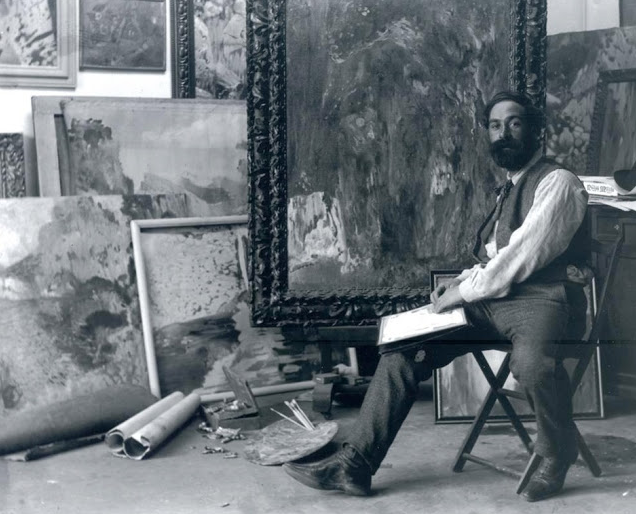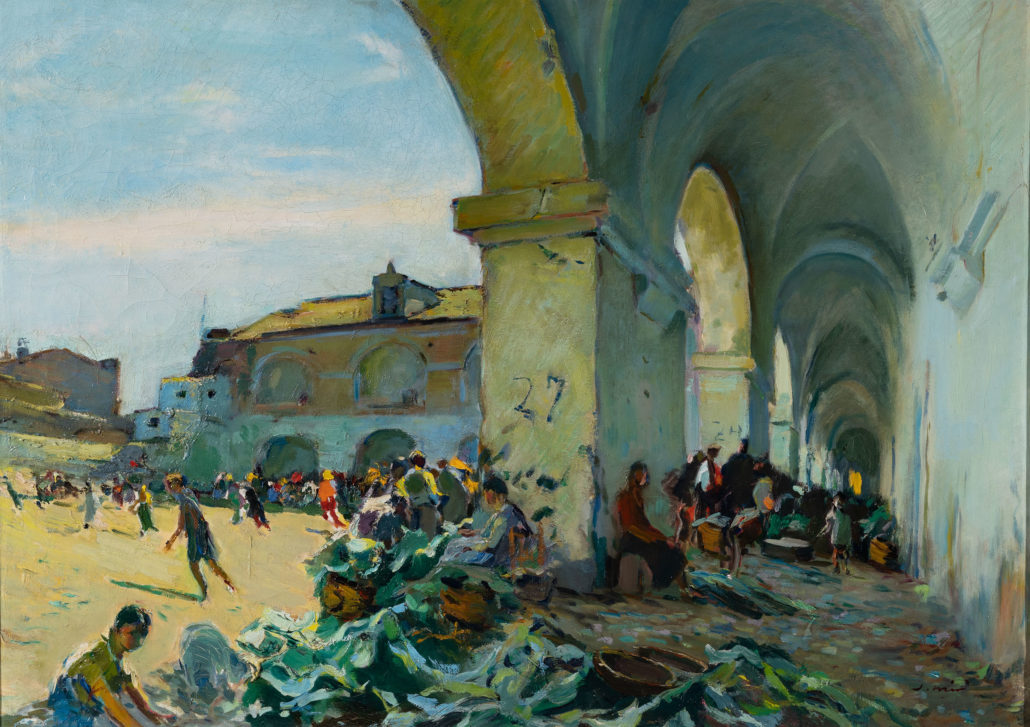Joaquim Mir, coloring the pages of a gray story.
From his earliest youth, Joaquim Mir was part of the most anti-academic artistic circles. At the age of twenty, in his native Barcelona, with his friends Isidre Nonell and Ramon Pichot, among others, they formed the Colla del Safrà, a heterodox group with no other dogma than creative freedom.
Each one of them reinvented outdoor painting in their own way, and different corners of Barcelona and its surrounding towns (from Montjuic to Sant Martí de Provençals) were stained a saffron color. The predominance of the reddish tone of saffron in his paintings would give the group its name (“safrà”). Perhaps because they lived in a city beset by bombs, the glass through which to look at the streets was saffron. Whirlwinds of violence stirred Barcelona at the end of the century, shaken by anarchist attacks, which were punished with drastic repressions. Accelerated industrialization had plagued broad social strata.
Mir was no stranger to social injustices, but instead of portraying the harshness of life, what he did was claim the healing function of beauty. As he himself wrote: “only I want my works to rejoice the heart and flood the eyes and soul with light “. Faced with the black and white of the reality that he had to live, Mir opposed a radiant palette, with infinite nuances, each of which were keys with which to make the soul vibrate.
His painting would go through several stages: in Mallorca, he would go beyond the symbolist postulates with his subjugating oil paintings of cliffs; in the Tarragona years, he would explore the plastic limits of post-impressionism …
In its last stage, that of Vilanova i la Geltrú, it reaches a calm maturity . Those were the years of the military dictatorship of Primo de Rivera, especially repressive for the Catalan territory. Mir, after marrying a young woman from Vilanova, a coastal town in the province of Barcelona, settled permanently in the town, and painted numerous places in the surroundings: views of the beach and the interior. But above all were the scenes of daily life in Vilanova, centered on the bustle of the market or local festivals, where his energetic line achieves a masterful combination of light burst and popular flavor.
In the same years that he made “Las Comparsas de Vilanova” (ca.1926), he had to carry out the “Plaça del mercat”, oil painting that Setdart is bidding these days in its online auctions. Both are characterized by an agile brushstroke and vibrant colors, typical of a mature stage, that capture the bustle and movement (from the party or the market). Both offer a peculiar point of view: the troupes seem to have been painted from a balcony in the square, and Plaça del Mercat offers a side perspective, at street level, like a passerby about to enter the covered gallery and opening on the left a bright view of the plaza de tierra. Mir reduces reality to its basic elements through an excellent handling of light and color, suggesting the pulse that beats under the forms. Thus, the figures of the greengrocers and the passersby are pure chromatic agitation and the light of noon seeps into the shady recesses of the arcades.
With the start of the Civil War, the painter would seclude himself in his house in Vilanova, and the best compositions would be reflected from his garden. He had to live difficult times, but he knew how to permeate his surroundings with lights that would drive away the shadows.




